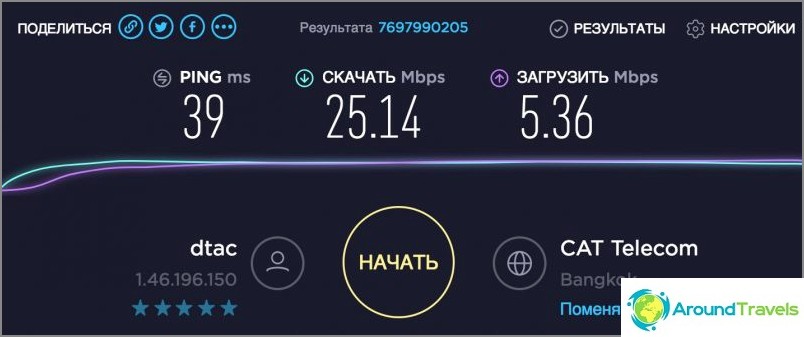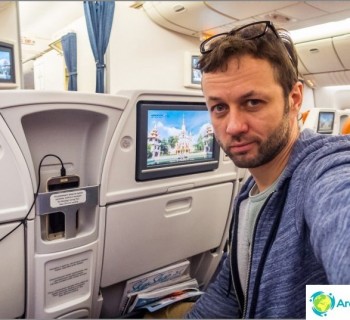The information in this section may have become outdated, I stopped tracking trends: new frequencies appear for operators, modern smartphones also have much more frequencies than before. As far as I understand, problems with Internet speed are found mainly in Chinese devices that do not support all frequencies, but some.
Internet speed
Instructions on how to buy a SIM card>
Sometimes there are reviews of tourists, they say, the Internet speed in Thailand is low. This is wrong. On the contrary, every year it gets better and better. And the problems for people could be related to the fact that they have old smartphones, something is not so configured, or they simply do not quite navigate the Internet speeds..
You can safely count on 5-15 megabits, if you have not climbed into the wilderness, but are in one of the resorts. I have had 30-50 megabits speed, apparently next to the tower was.

Mobile internet speed in Thailand
Speed versus frequency
DTAC frequencies: GSM 1800, UMTS 850, UMTS 2100
AIS frequencies: GSM 900, GSM 1800, UMTS 900
TrueMove frequencies: GSM 1800, UMTS 850
TOT3G frequencies: GSM1900, UMTS 2100
DTAC's 3G worked (and may be working somewhere else) at UMTS 850 MHz, which is not typical for Russia. However, most modern smartphones and tablets support this frequency. For example, smartphones from Samsung or iPhones definitely support. I now have a Samsung Galaxy S9 + (before that there were S3, S5 duos and S7), the frequency is always supported and the Internet flies! Especially when using a phone that has 4G. Now there is 4G coverage, which allows you to use a higher Internet speed.
It is worth knowing that some old Chinese devices do not support UMTS 850 MHz, and also often do not support UMTS 900 MHz, which is already relevant for Russia, too, where it is used. But DTAC has already switched to a more modern frequency of 2100 MHz (it seems that all smartphones have it),
You can clarify the characteristics of your smartphone or modem on the manufacturer's official website. If it turns out that your device does not support frequencies, then you can either buy a USB modem on the spot (called aircard), or try a SIM card from another operator.

